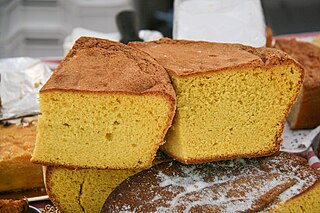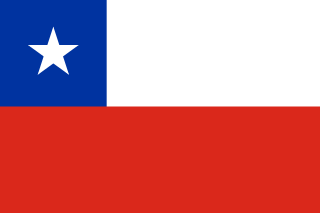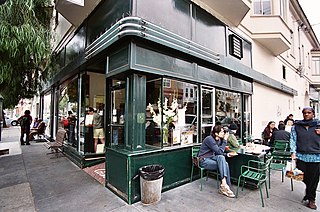
Starbucks Corporation is an American multinational chain of coffeehouses and roastery reserves headquartered in Seattle, Washington. It was founded in 1971 by Jerry Baldwin, Zev Siegl, and Gordon Bowker at Seattle's Pike Place Market initially as a coffee bean wholesaler. Starbucks was converted into a coffee shop serving espresso-based drinks under the ownership of Howard Schultz, who was chief executive officer from 1986 to 2000 and led the aggressive expansion of the franchise across the West Coast of the United States.

The cuisine of California reflects the diverse culture of California and is influenced largely by European American, Hispanic American, East Asian and Oceanian influences, and Western European influences, as well as the food trends and traditions of larger American cuisine.

Baumkuchen is a kind of spit cake from German cuisine. It is also a popular dessert in Japan. The characteristic rings that appear in its slices resemble tree rings, and give the cake its German name, Baumkuchen, which literally translates to "tree cake" or "log cake".

Maxim's Caterers Limited is a Hong Kong–based food, beverage and restaurant chain jointly owned by Dairy Farm International Holdings Limited and Hong Kong Caterers Ltd.

Pandesal, also written as pan de sal, is a staple bread roll in the Philippines commonly eaten for breakfast. It is made of flour, yeast, sugar, oil, and salt.

Bizcocho is the name given in the Spanish-speaking world to a wide range of pastries, cakes or cookies. The exact product to which the word bizcocho is applied varies widely depending on the region and country. For instance, in Spain bizcocho is exclusively used to refer to sponge cake. In Uruguay, most buttery flaky pastry including croissants are termed bizcocho, whilst sponge cake is called bizcochuelo. In Chile, the Dominican Republic, and Bolivia bizcocho refers to a sweet dough (masa) baked with local ingredients, similar to the bizcocho from Spain. In Ecuador the dough of a bizcocho can either be sweet or salty. The US state New Mexico is unusual in using the diminutive form of the name, bizcochito, as the name for a locally developed and very popular cookie.

Chilean cuisine stems mainly from the combination of traditional Spanish cuisine, Chilean Mapuche culture and local ingredients, with later important influences from other European cuisines, particularly from Germany, the United Kingdom and France. The food tradition and recipes in Chile are notable for the variety of flavours and ingredients, with the country's diverse geography and climate hosting a wide range of agricultural produce, fruits and vegetables. The long coastline and the peoples' relationship with the Pacific Ocean add an immense array of seafood to Chilean cuisine, with the country's waters home to unique species of fish, molluscs, crustaceans and algae, thanks to the oxygen-rich water carried in by the Humboldt Current. Chile is also one of the world's largest producers of wine and many Chilean recipes are enhanced and accompanied by local wines. The confection dulce de leche was invented in Chile and is one of the country's most notable contributions to world cuisine.

A marraqueta is a bread roll made with wheat flour, salt, water and yeast.

Tartine is a small, US-based bakery chain. As of February 2022, it operates three locations in the San Francisco Bay Area, five in Los Angeles, and six in Seoul Capital Area, South Korea. Its original bakery opened in 2002 in San Francisco's Mission District, at 600 Guerrero Street.
Pascal Rigo is a French Restaurateur who owns a small "empire" of boulangeries, restaurants, and wholesale and retail bakeries in San Francisco and Mill Valley, California, that operate as La Boulangerie de San Francisco, Bay Bread, La Boulange, and (formerly) Cortez, Chez Nous, Gallette, and others.

Mexican breads and other baked goods are the result of centuries of experimentation and the blending of influence from various European baking traditions. Wheat, and bread baked from it, was introduced by the Spanish at the time of the Conquest. The French influence in Mexican Bread is the strongest. From the bolillo evolving from a French baguette to the concha branching out from a French brioche even the terminology comes from France. A baño maría, meaning a water bath for a custard type budín or bread pudding comes from the French word bain marie. While the consumption of wheat has never surpassed that of corn in the country, wheat is still a staple food and an important part of everyday and special rituals. While Mexico has adopted various bread styles from Europe and the United States, most of the hundreds of varieties of breads made in the country were developed here. However, there is little to no baking done in Mexican homes; instead, Mexicans have bought their baked goods from bakeries since the colonial period.
La Panadería was a contemporary art gallery located in Mexico City founded in 1994 by artists Yoshua Okón and Miguel Calderón. It represented a singular role in the artistic creation of Mexico in the late nineties due host and promote expressions traditionally relegated from institutional circuits. La Panadería become a reference point for the creative community in the city due to its alternative vocation.

Espresso House is the largest coffeehouse chain in the Nordic countries. The company was founded in Lund, Sweden in 1996 by Elisabet and Charles Asker. In March 2018 it reached over 460 locations throughout Sweden, Norway, Finland, Denmark, and Germany.

Jacobinas are Filipino biscuits. They are distinctively cubical in shape, resembling a thicker galletas de patatas. The square biscuit was first produced by the Noceda Bakery in 1947 at 78 Gen. Luna Street, Mendez, Cavite by Paterno Noceda, and JACOBINA was registered with the Intellectual Property Office of the Philippines in 1955. In 1975, La Noceda Food Products, Inc. was incorporated to produce the famous biscuits. The biscuits are sold by the Noceda bakery in the Philippines and by the Jacobina corporation in the United States and other Asian countries. Jacobinas are traditionally eaten paired with coffee for breakfast.

Paborita are Filipino disc-shaped biscuits with a flaky texture. They are made with wheat flour, sugar, skim milk, salt, baking powder, alum, and cooking oil. They are very similar in taste to galletas de patatas. They are traditionally eaten paired with hot drinks or with fruit preserves.
Korean baked goods consists of either snacks or bread. Examples include bread, buns, pastries, cakes, and snacks.

La Bombonera is a restaurant founded in 1902 in San Juan, Puerto Rico, located on 259 San Francisco street of Old San Juan in Puerta de Tierra. It is the third oldest restaurant in Puerto Rico after La Mallorquina founded in 1848 and "Cafè Turull" founded in 1816. Some of its products are Mallorcas, creole version of Majorcan ensaïmades. The current building dates from 1925 and occupies two adjacent buildings on San Francisco Street, numbers 259 and 261. At 259 there is the living room and at 261, on the first floor, you can find the kitchen and the bathrooms in the restaurant.
Starbucks Reserve is a program by the international coffeehouse chain Starbucks. The program involves operation of worldwide roasteries; currently six are in operation. Also part of the program are 28 coffee bars preparing Starbucks Reserve products, what Starbucks considers its rarest and best-quality coffees, usually single-origin coffees. Some Starbucks Reserve coffee is also sold in about 1,500 of the chain's traditional outlets.
Japan has a coffee culture that has changed with societal needs over time. Today, coffee shops serve as a niche within their urban cultures. While it was introduced earlier in history, during the sixteenth and seventeenth centuries by Dutch and Portuguese traders, it rapidly gained popularity at the turn of the twentieth century. It supports the social aspects of Japan, serving both as a space to connect but also to alleviate oneself from social pressures. Coffee is also defined by class interactions and classicist behaviors and has economic influence through the mass amount of import of coffee and the mass consumption of coffee in Japan in its many different forms.














